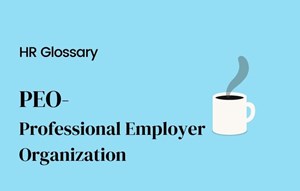Boomerang Employee

[Sommaire]
What is a boomerang employee?
A boomerang employee is someone who left your organization only to return to your employment at a later date. This means that they were a former employee who had left the company and then been hired back.
Boomerang employees are essentially repeating workers, people who have left your company to work for another organization but then return because they either became unhappy there or because their career didn't progress as expected.
Whether hiring (or should that be rehiring?) a boomerang employee is a good idea depends on several factors which we look into here.
What are the advantages of a boomerang employee?
There are definite advantages and disadvantages of boomerang employment.
They also fit into the work culture easily due to their knowledge of existing policies and procedures. However, boomerang employees can bring a sense of entitlement with them as well because they believe they should still be employed there even though they left the organization for a while. We will resume here few advantages of hiring a former employee :
- Cost-effectiveness: Although you might need to pay a boomerang employee more than you did when they left you, they will cost less to train and be up to total productivity faster. According to the Harvard Business Review, hiring former employees can cut hiring costs by 50%.
- Expertise: Former employees come back to your organization with experience, new skills and knowledge that is invaluable. You don't need to worry about training them on new products or systems, as they already know everything necessary to get up and running quickly.
- Cultural fit: As ex-employees return to your company, bringing them back into the existing company culture and environment is much easier. They know how to fit in, and they already understand the company's goals and objectives.
- Motivation: Ex-employees sense of entitlement can be motivating; they want to prove themselves as valuable members of your team. Often ex-employees will work harder to prove themselves and be more conscientious.
- Relationships: Ex-employees may also have strong relationships with their former coworkers providing a social continuity within your organization that can increase morale and productivity temporarily or long term between the colleagues. It will be easier for current employees to create relationships as they have previously worked together in the same company. The employee engagement of all the other employees will be enhanced.
- They are bringing back a fresh and actionable perspective: Having already worked in your business, left and returned, hiring a boomerang employee will bring a valuable perspective. While new hires also do this, the added value of an employee who has previously worked in your organization is that they already understand how these learnings could be applied in your organization.
- Open to new ideas: Ex-collaborators are more open to new ideas and processes as they've seen how other companies work during their time away from the business.
What are the disadvantages of a boomerang employee?
Although hiring a boomerang employee presents many advantages, it also has a few disadvantages that we will enumerate here. The disadvantages of hiring a boomerang employee include:
- They might not be the best person for the job. They might not be the right candidate because they know everyone and will slot into the business as if they never left. Make sure you review the complete list of applicants to avoid giving ex-collaborators an unfair advantage.
- The reason they left in the first place. If they left because they didn't like the culture, the systems, or couldn't get on with other people… are they likely to have changed? It wouldn't be wise to bring someone back into the business that caused problems the first time around, even if they know what they're doing.
- It might cause tension. The ex-employees will learn how to work with existing staff and make them feel like they belong, but this could also create a sense of jealousy or feelings that the ex-employee is getting an unfair advantage or preferential treatment.
- Inability to change. Former collaborators might have been away from your company for a long time and unable to adapt to the changes that have been made since they left. They could be too set in their ways and unwilling to adapt, which will make it harder to work out how they can contribute best within the business.
- The risk of decline after returning. Ex-collaborators will often be motivated and ready to work hard, bringing fresh ideas and valuable experience to your business. However, you mustn't put too much pressure on them once they return, as they might feel like they need to do more than expected, which can lead to an inevitable decline in their performance due to burnout.
- They could still want to leave again. Former employees do not just come back for the sake of it, and although you will be very grateful that they are coming back to the business, they still might feel like something is missing or that their career needs more. If you notice them struggling with this issue, it might be best to let them go. Boomerang employees do not want to continue coming in and out of your company for the rest of their lives.
Why do employees go boomerang?
Collaborators may return to your organization for many reasons. One study states that as many as a third of collaborators have returned to a former employer, with many more considering it a reasonable option. Reasons could include:
- Realising the company they were tempted to join wasn't as good as they thought it was.
- They left to study, raise a family, or take another form of a career break.
- Non-work factors such as family life or illness influenced them to leave.
- They had a good working relationship with their previous team.
- They missed the influence they had in the company.
- They feel like they aren't achieving their full potential in the new company.
Ex-collaborators can be valuable assets for your business if done right, but hiring a former employee comes with a specific set of challenges that you need to address to ensure you don't lose one of your most valuable assets.
How to adapt the organization with boomerang employees?
Boomerang hiring is becoming the norm for many organizations. For this reason, it can be wise to develop a boomerang hiring process policy. This could include:
- A warm offboarding Parting with collaborators who leave your organization on good terms leaves the door open for them to return at a later date.
- Setting up an ex-employee "alumni" allows you to stay in touch with ex-collaborators to make them aware of opportunities they might be suitable for.
- Ensuring that the interview process is impartial and does not favor ex-collaborators ahead of new talent who may have more to offer.
- Setting up a clear boomerang rehiring policy to avoid conflict around subjects such as an expectation for increased compensation or benefits due to their old job in their former company.
What actions can managers take to correctly welcome boomerang employees?
Hiring managers should be aware that former collaborators who have left may not necessarily still feel the same way about their previous employer sometimes for personal reasons.
When ex-collaborators return, they need to feel like they are part of the team again, and their experience and talents are required. Managers should ask ex-collaborators how they can help them readjust to the organization. If former employees feel like their talents are not recognized or appreciated, they may leave again for good.
Hr professionals and managers of the company should ensure ex-collaborators have "buddy mentors" who will provide guidance and support through the transition process. Boomerang employees may also need time to catch up on recent changes and policies, which they should be offered.


